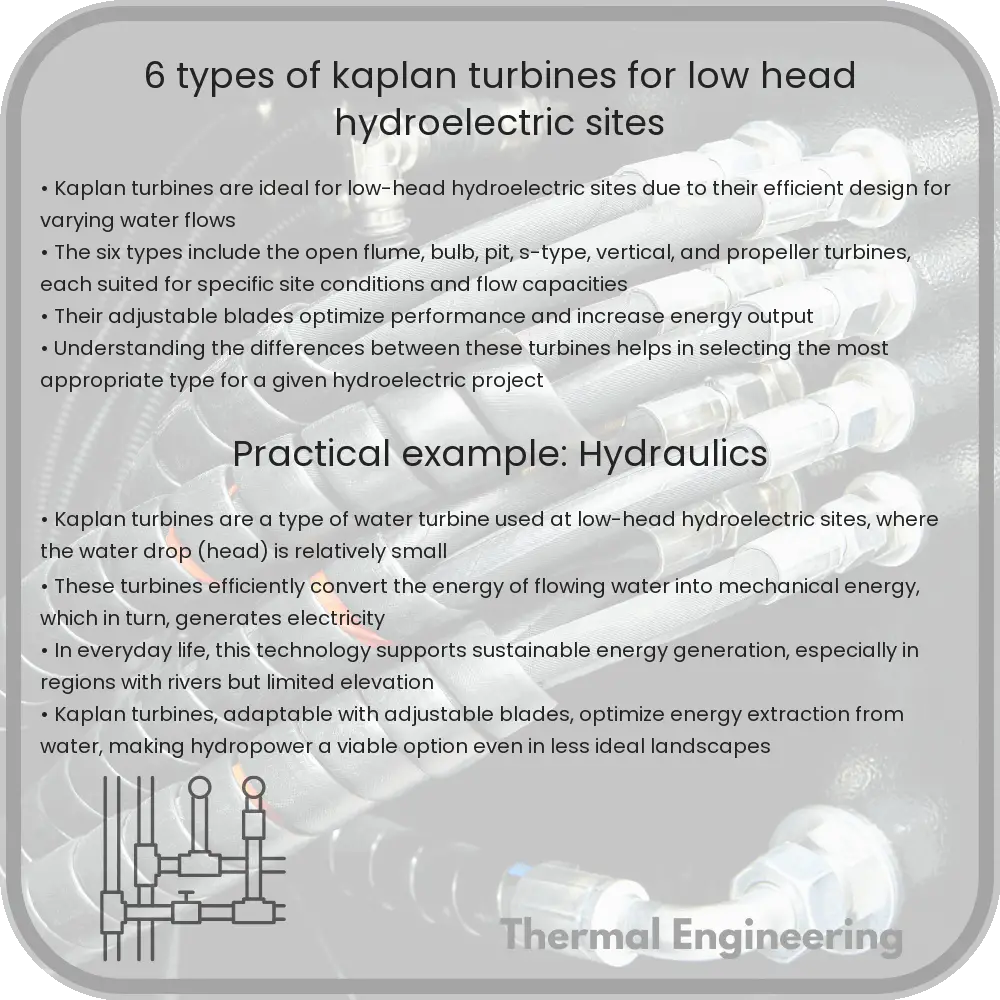Learn about Kaplan turbines, their types, and applications in low-head hydroelectric power generation.

Understanding Kaplan Turbines: Types and Applications
Kaplan turbines, named after Austrian engineer Viktor Kaplan, are a type of water turbine used primarily for electrical power generation in low-head hydroelectric plants. Here, “low head” refers to the small height difference between the upper and lower water levels, typically less than 30 meters. Kaplan turbines are a subset of reaction turbines and are particularly efficient at handling high flow rates with variable heads due to their adjustable blades. This article explores six types of Kaplan turbines and their specific applications in low-head hydroelectric sites.
Types of Kaplan Turbines
- Standard Kaplan Turbine: This is the most common form of Kaplan turbine. It features adjustable runner blades and a fixed wicket gate to regulate water flow. This design is highly efficient in converting low head but high flow water conditions into energy, making it ideal for river and small dam installations.
- Propeller Turbine: Similar to the Kaplan but with fixed blades, the propeller turbine is typically used where the head and flow conditions remain relatively constant. While slightly less flexible than the fully adjustable Kaplan, it offers a simpler, more cost-effective solution for stable environments.
- Tubular Turbine: These turbines are installed horizontally and feature a straight flow-through design, which helps to minimize the overall footprint of the power station. Tubular turbines are suitable for sites where space is limited and are often used in tidal and low-head storage pump stations.
- Bulb Turbine: The bulb turbine incorporates the generator into a water-tight compartment at the nose of the turbine, improving accessibility and reducing the complexity of the power plant’s design. This type is particularly well-suited for low-head environments where a wide flow range must be accommodated.
- Pit Turbine: Characterized by its vertical design and a gearbox that is located above the generator, pit turbines are advantageous where the water level fluctuates significantly. The vertical installation allows for easier maintenance and smaller civil works.
- S-Turbine (Straflo): This turbine has a generator integrated around the circumference of the turbine. The unique layout helps in reducing the shaft length and hence, decreases mechanical losses. S-turbines are suitable for very low head sites and are recognized for their robustness and operational flexibility.
Conclusion
Kaplan turbines are a versatile and efficient choice for hydroelectric power generation, especially in low-head water sites. Knowing the specific characteristics and best uses of each type of Kaplan turbine allows engineers and project planners to select the most appropriate technology based on the environmental conditions and energy needs of a given location. Whether for large-scale hydro projects or smaller installations, understanding these options is crucial for optimizing power production and achieving sustainable energy goals.
Thus, Kaplan turbines continue to play a pivotal role in the rise of renewable energy technologies, providing a reliable and environmentally friendly energy source for future generations.